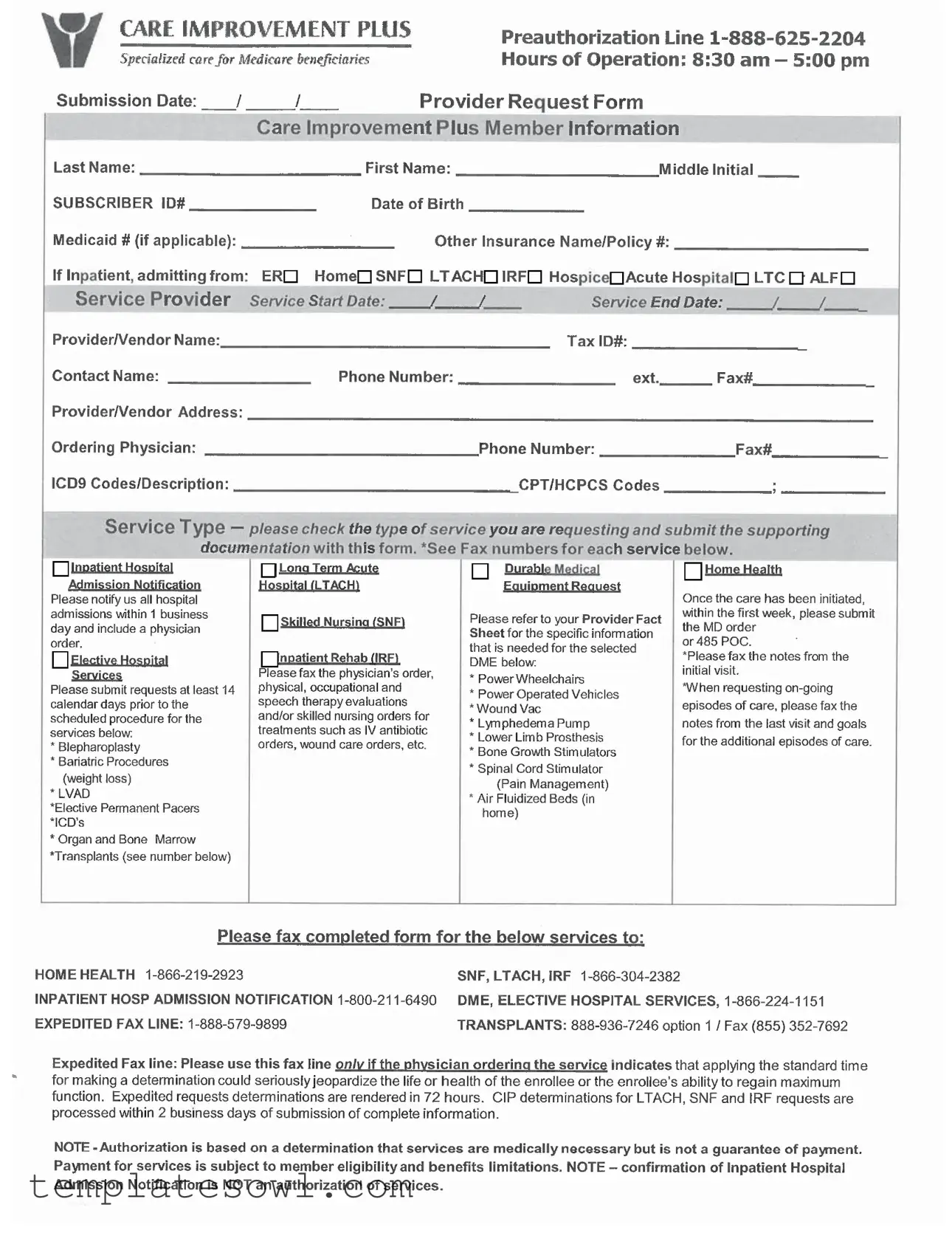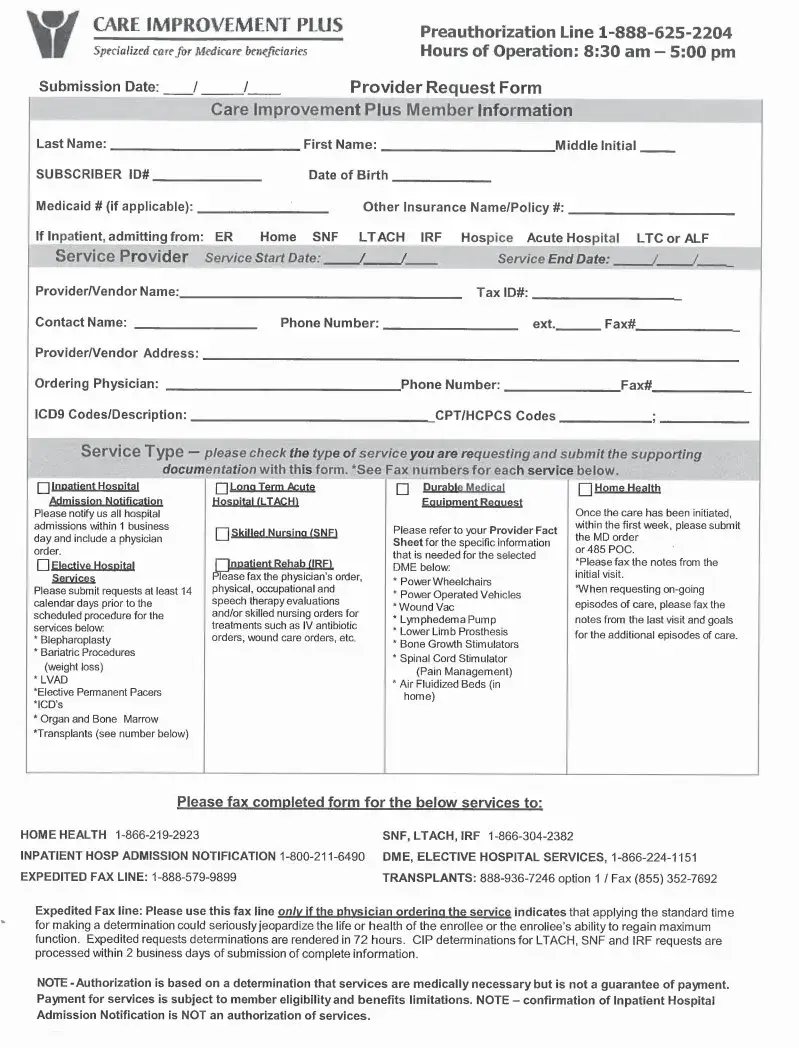Filling out the Care Improvement Plus Authorization form can be a daunting task, especially for those unfamiliar with the requirements. Mistakes made during this process can lead to delays, denials, or complications in receiving necessary care. Here are ten common mistakes to avoid when completing this important form.
One frequent error is the omission of the subscriber ID number. This number is crucial for identifying the beneficiary's record and ensuring that the request is processed correctly. Without it, the form may be returned or delayed.
Another mistake occurs with the incomplete member information. It’s vital to provide the full name, including the last name, first name, and middle initial, along with the date of birth and any applicable Medicaid number. Inaccuracies in this section can lead to unnecessary follow-up communication and potential disruptions in care.
Many people also overlook the service start and end dates. Not specifying these dates can cause confusion regarding the duration of the requested services. This detail is particularly important for approval processes, as it informs the provider and insurer about the timeline for the requested care.
Additionally, the section for ICD9 and CPT/HCPCS codes is often filled incorrectly. These codes categorize the medical necessity of the services requested. Inaccurate coding can impact authorization and reimbursement, leading to possible denials of claims down the line.
An overlooked section is checking the type of service requested. Without this, the processing team might not have clear direction on how to categorize the request. Failing to check a box could mean that essential documentation is lost or misdirected.
Not including supporting documentation is another frequent pitfall. This documentation provides context for the request and validates the medical necessity of the services. Submitting the form without these crucial papers can lead to instant rejection.
Incorrectly filling out the provider/vendor information is another common error. Ensure that the tax identification number, phone number, and address of the service provider are accurate. Payment and communication rely heavily on this information being correct.
Some individuals fail to inform the insurance provider within the required time frame regarding hospital admissions. A notification must occur within one business day to avoid complications in receiving care and authorization. Delays in this could result in higher costs or payment denials.
Another mistake is using the wrong fax number for submissions. Each service type has specific designated fax numbers. Submitting to the incorrect number can lead to unnecessary delays in processing, potentially compromising the timing of care.
Finally, it is essential to understand the distinction between an authorization of services and the determination of medical necessity. Many people think that completing this form guarantees payment, while in fact, it is subject to eligibility and limitations set by the insurance plan.
Being aware of these common mistakes can transform the process of completing the Care Improvement Plus Authorization form from a burden into a smoother experience. Careful attention to detail will not only expedite the processing of requests but will also ensure that beneficiaries receive the essential care they need without unnecessary hitches.

